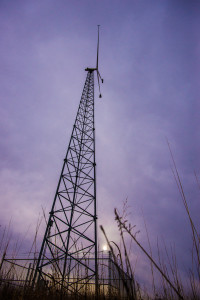
This year, the Conard Environmental Research Center (CERA) is reaching out beyond just biology students. The 365-acre biological field station, located about 12 miles away from campus, has traditionally been used as a research source for Grinnell College’s biology department. Recently however, CERA manager Elizabeth Hill has been working to make the nature reserve accessible to all students of many different disciplines and interests.
“What I’m trying to do is increase accessibility and also the type of student that gets to go out to CERA. Whether it’s somebody who just wants to sit in the beautiful Environmental Education Center looking over prairie and study for a couple hours, or someone who wants to go for a three-mile trail run, or a couple of friends who just want to go for a walk,” Hill said.
Beginning on Saturday, April 4, a weekly shuttle will begin running from the College to CERA, as an effort to increase accessibility for students. Grinnellians will be able to spend Saturday afternoons on the prairie.
Nick Matesanz ’16, who interned at CERA last summer, believes that this new service will help connect more people on campus to the research area.
“A lot of people don’t know [CERA] even exists … or what it is, or they don’t know that they can just go and walk around. The shuttle thing is really cool, because that is a big barrier—it is a 20-minute drive … It’s really good to establish a connection, just by setting up the shuttle service,” he said.
This year, CERA has also offered various programs throughout the year to attract students of many interests. CERA held several arts related events last semester, such as a soundscape trail walk and a papermaking workshop, following the Grinnell’s Center for Prairie Studies’ theme of “Arts, Community, and Sustainability.” CERA will continue with this theme spring semester, hosting another soundscape walk, “The Listening Path,” on March 7 and an event to create prairie ringtones on April 25.
In addition to collaborating with the arts, CERA hopes to become a generally more interdisciplinary space.
“At any given moment, there could be an aquatic biology class down at the pond conducting water quality measurements, to a tutorial visiting and doing a … walking meditation about landscape and people’s connection to nature, so it’s very broad and diverse,” Hill said.
Recently, Hill has worked to increase communication with professors from different departments, resulting in tutorials, history, anthropology and art classes visiting CERA, in addition to traditional biology courses.
This interdisciplinary approach is all part of an effort to promote one of CERA’s core goals—improving Grinnell students’ relationship with nature.
“Obviously it’s a research area, it’s so biological research can be conducted, but I think it’s also … really for connecting students to the landscape, and making students understand the sense of place of Iowa that students don’t really get,” Matesanz said. “Aside from the practical goals of getting all the invasive species out and improving the diversity … it’s really about establishing a stronger link.”




























































